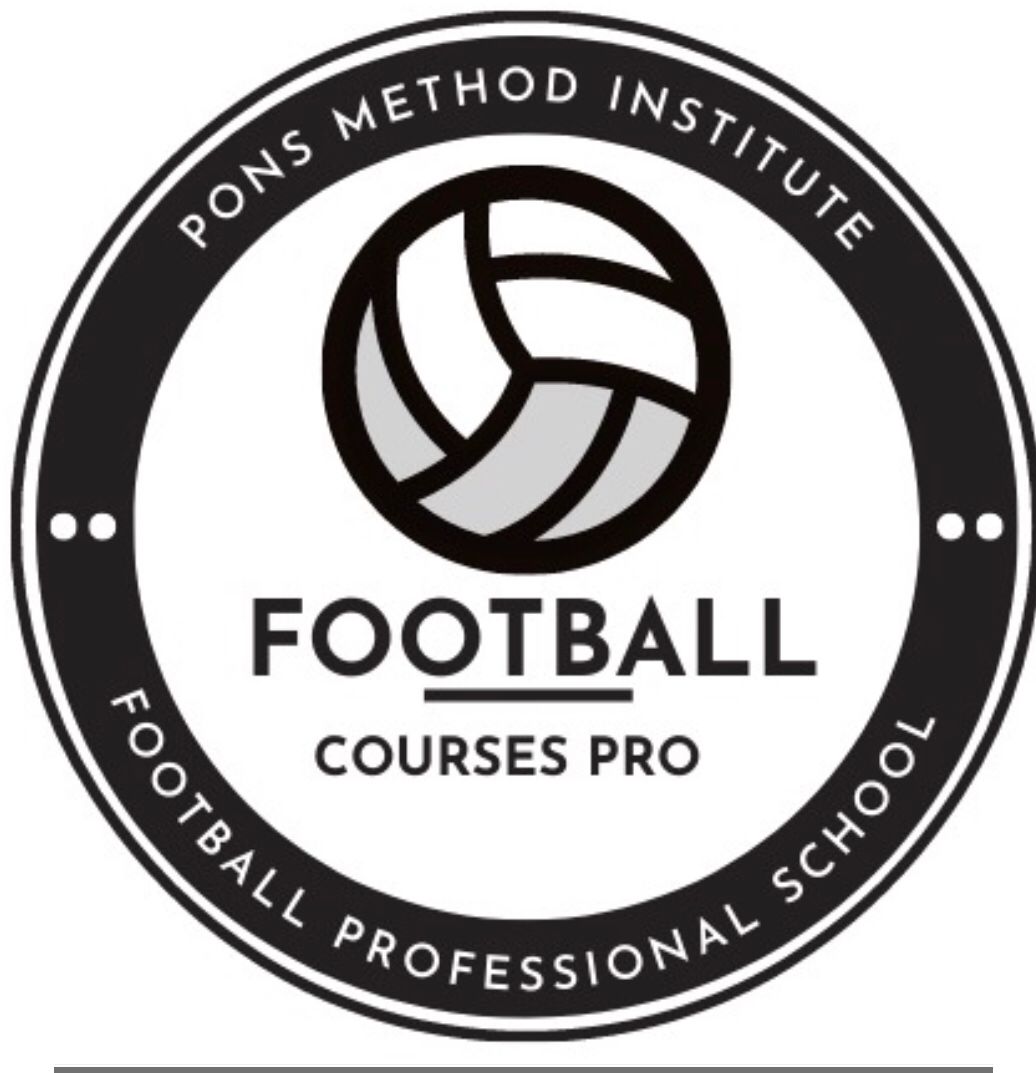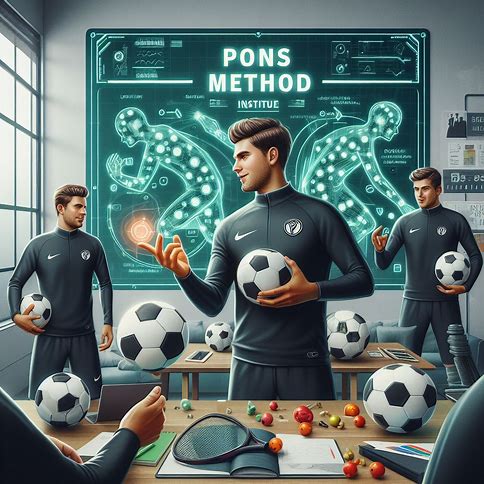This step-by-step framework ensures that the Pons Method is applied holistically, balancing tactical precision, psychological resilience, and technological integration to achieve long-term success.
Step 1: Create a vision and set goals
Goal: Define long-term goals for the team and align them with the principles of the Pons Method.
Actions:
Identify the desired style of play and tactical identity.
Set measurable goals, such as improving possession rates, defensive stability, or individual player development.
Communicate the vision clearly to players and staff.
Key result: A documented mission statement and success criteria for the season.
Step 2: Planning and organization
Goal: Develop a structured plan to integrate the Pons Method into the team’s daily routines.
Actions:
Break the season into phases (e.g. pre-season, mid-season, post-season) with specific goals for each.
Allocate resources, including time, equipment and technology for training.
Align the training programme with match days to optimise performance and recovery.
Key result: A detailed training calendar and resource allocation map.
Step 3: Assemble and train staff
Objective: Develop a competent and aligned technical staff to implement the methodology.
Actions:
Assign clear roles: fitness coach, tactical analyst, psychologist and rehabilitation specialist.
Conduct workshops on the principles of the Pons Method to ensure a unified approach.
Encourage open communication and collaboration between staff members.
Key result: A cohesive technical team equipped to execute the methodology.
Step 4: Conduct individual and team assessments
Objective: Assess players’ technical, tactical, physical and psychological skills.
Actions:
Use data analysis, video reviews, and performance metrics to assess strengths and weaknesses.
Conduct one-on-one meetings to understand player goals and feedback.
Analyze past match performance to identify areas for improvement.
Key Outcome: Complete player profiles and a team strengths/weaknesses report.
Step 5: Develop and execute training drills
Goal: Design and implement drills aligned with the team’s vision and needs.
Actions:
Incorporate specific drills for the defensive, offensive, and transition phases of play.
Use gamified elements to maintain engagement, such as progressive challenges and reward systems.
Focus on tactical automation through training patterns and habits for each phase of play.
Key Outcome: A library of customized drills and training modules.
Step 6: Implement performance feedback loops
Goal: Provide players and staff with actionable feedback to refine their performance.
Actions:
Use wearable technology and video analysis to obtain real-time feedback.
Schedule weekly review sessions to discuss progress and areas for improvement.
Encourage self-assessment and peer feedback to build accountability.
Key outcome: Regularly updated feedback reports and adjusted training plans.
Step 12: Evaluate the Coaching Staff’s Impact
Objective: Assess the technical staff’s effectiveness in implementing the Pons Method.
Actions:
Collect performance data to track the success of training plans.
Conduct peer evaluations among staff to identify strengths and areas for improvement.
Hold quarterly reviews to ensure alignment with the overall vision.
Key Deliverable: A high-performing coaching team with clear improvement plans.
Step 13: Celebrate Milestones and Reinforce Success
Objective: Recognize and reward achievements to maintain morale and motivation.
Actions:
Highlight individual and team successes during meetings or events.
Use gamified rewards for players who excel in training or matches.
Share progress and achievements with fans and stakeholders to build external support.
Key Deliverable: A motivated team and staff that values growth and progress.
Step 14: Reflect and Innovate for the Future
Objective: Continuously refine the Pons Method for sustained success.
Actions:
Conduct end-of-season debriefs to discuss what worked and what didn’t.
Introduce new concepts, such as integrating cutting-edge edge technology or collaborating with other experts in football training.
Adapt the training program to meet the evolving demands of players, teams, and leagues.
Key Deliverable: A forward-looking roadmap that ensures consistent innovation and excellence.
Step 15: Develop scenarios Advanced tactics
Goal: Prepare the team for unusual and high-risk situations.
Actions:
Create drills for scenarios such as defending a lead with 10 players, stress drills in penalty shootouts, or counterattacks under time constraints.
Include specific opponent analysis for Simulate their playing patterns during training.
Introduce decision-making frameworks to help players quickly assess options under pressure.
Key outcome: A confident and adaptable team in complex or high-pressure match scenarios.
Step 16: Create a data-driven feedback ecosystem
Goal: Use technology and analytics to continuously improve team and player performance.
Actions :
Implement GPS trackers, video analysis tools, and performance apps to collect match and training data.
Use this data to create dashboards that visualize metrics such as player fitness, passing accuracy, or defensive recoveries.
Schedule meetings weekly sessions where players and staff review key performance data together.
Key Objective: Actionable performance insights to refine training and match day strategies.
Step 17: Invest in education and certification
Goal: Ensure coaching staff stay informed and aligned with cutting-edge methods.
Actions:
Enroll staff in Pons Method certification programs or related tactical workshops.
Partner with institutions that offer advanced football management and analysis courses.
Organize knowledge-sharing sessions among staff to learn from internal and external experiences.
Key goal: A highly skilled and constantly learning coaching team.
Step 18: Create an inclusive, player-centric culture
Goal: Establish an environment where every player feels valued and supported.
Actions:
Implement open-door policies where players can share feedback, concerns, or ideas with coaches.
Highlight individual contributions to the team during meetings or video reviews.
Use psychological profiling to better understand and address players’ mental health and motivational needs.
Key Outcome: A culture of trust, inclusion and player empowerment.
Step 19: Develop partnerships and networks
Goal: Leverage external resources to improve your methodology.
Actions:
Establish relationships with sports technology providers to gain early access to innovative tools.
Collaborate with local and international clubs for joint training sessions or friendly matches.
Join coaching networks to exchange ideas and stay up to date on the latest industry trends.
Key Outcome: Strategic partnerships that enhance team growth and competitiveness.
Step 20: Standardize processes for replication
Goal: Document processes to ensure consistency and scalability.
Actions:
Create training manuals detailing drills, practices and feedback methodologies.
Develop templates for pre-match analysis, player evaluations and weekly schedules.
Create an internal knowledge base for the club, making it easier to onboard new staff or replicate successful practices.
Key Outcome: A standardised operating framework for long-term consistency.
Tools and templates for success
To support this comprehensive roadmap, here are some tools you may need:
Training plan templates: To schedule and design daily and weekly training sessions tailored to tactical objectives.
Player evaluation forms: To track technical, tactical, physical and psychological progress.
Performance dashboards: Customisable charts to visualise data on player and team metrics.
Video analysis tools: Platforms such as Hudl or Wyscout to analyse match sequences.
Communication platforms: Apps such as Slack or Microsoft Teams to maintain clear communication between staff.
Feedback and gamification apps: Tools that gamify performance metrics (e.g. Teambuildr, Coach’s Eye).

